
Ronald.phillips
Shared posts
You Should Air-Fry Some Canned Potatoes
Avast: New Linux Rootkit and Backdoor Align Perfectly
Malware hunters at Avast have analyzed a newly discovered rootkit and backdoor that target Linux and appear designed to function in synergy with each other.
Hideo Kojima attempts to calm panicky uproar over Xbox/PlayStation relationship

We can see other people
Hideo Kojima, Metal Gear creator and all-around eccentric game-making dude, has offered further clarification on his studio's relationship with industry giants PlayStation and Xbox, following on from his recent announcement that he will be working with the latter on an as-yet-unannounced new game.
Kojima made the initial announcement during Sunday's Xbox and Bethesda Games Showcase, where the auteur appeared in a pre-recorded video to reveal that he would be working with Xbox to make a challenging, "never-before-seen" title that will be at the cutting-edge of Xbox technology.
"It's a completely new game that no one has ever experienced or seen before," noted Kojima in the video. "I've waited very long for the day when I could finally start to create it."
And that was that. Except it wasn't.
Because The Internet, a small cabal of PlayStation users took Kojima's comments as some kind of bizarre "betrayal" toward them, seeing his new Xbox project as a sign that he had left Sony behind to "chase the money" with some strange non-sentient idealization of a new lover. Many of these infuriated "fans" took to social media to voice their abject rage concern, with one aggrieved party going so far as to found a Change.org petition calling for the cancellation of the new Xbox project.
https://twitter.com/KojiPro2015_EN/status/1536227678352973824?s=20&t=fhnbYKpThJufVOhugCrxdw
Following this online outburst, Kojima Productions took to Twitter yesterday in a bid to allay fears that the studio had become an Xbox-exclusive company.
"After the announcement of our partnership with Microsoft using the cloud technology, many people have asked us about our collaboration with SIE," reads the tweet. "Please be assured that we continue to have a very good partnership with PlayStation as well."
"As an independent creative studio, #KojimaProductions will continue pursuing work on creations for our fans. We will explore various possibilities with games, movies, and music through platforms that evolve with time and technology. We look forward to your continued support!"
While Kojima has now clearly clarified that he will continue to work with PlayStation and Xbox (as well as any platform he or his studio chooses), it is likely that this still will not be enough for the naysayers. Y'see, for some people, it's not even just about Kojima Productions being Xbox-exclusive. It's simply about Kojima Productions collaborating with Xbox period. PlayStation vs. Xbox, WWE vs. AEW, Cat vs. Dog. Online tribalism in action. Come back Team Edward vs. Team Jacob, all is forgiven.
Kojima Productions' Xbox project is in development. We will no doubt hear more details later in 2022.
The post Hideo Kojima attempts to calm panicky uproar over Xbox/PlayStation relationship appeared first on Destructoid.
CNN unleashes its elite, crack team of reporters to uncover the truth behind one of life's great questions: What happens if you wake up before your alarm? [Facepalm]
China’s Domestic Zhaoxin Glenfly Arise GT10C0 2 GB Graphics Card Is Barely Faster Than Decade Old NVIDIA & AMD GPUs

China's home-grown Zhaoxin Glenfly Arise GT10C0 graphics card has been pictured and barely compares to decade-old NVIDIA and AMD GPUs.
Zhaoxin Glenfly Arise GT10C0 2 GB Graphics Card Is Barely Faster Than Decade-Old NVIDIA & AMD GPUs
Pictured over at Bilibili, the Zhaoxin Glenfly Arise GT10C0 graphics card is produced for Chinese domestic consumers. The graphics card is a low-end design that is aimed at office use & that's mostly it. It features a green-colored PCB with a standard low-profile cooler that hosts a single-blade fan and an aluminum heatsink block that is situated beneath a black-colored shroud.
The PCB for the Zhaoxin Glenfly Arise GT10C0 features 2 GB of DDR3 memory running across a 64-bit bus interface. There are four additional spots that can host 512 MB modules for a total of 4 GB of memory but they aren't utilized. The GPU itself is the Arise-GT10C0 and hosts a single VGA and HDMI output for display. The GPU features 24 cores though the exact GPU architectural details are unknown at the moment.
The user reports that currently, there are no graphics drivers available for the card but it can boot in Windows 10 without issues. Earlier, Tomshardware managed to grab a GPU benchmark run for the Zhaoxin Glenfly Arise GT10C0 that was running on a Zhaoxin KaiXian KX-U6780A CPU with 8 cores running at 2.7 GHz. In the Geekbench OpenCL benchmarks, the graphics card barely came close to decade-old GPUs such as AMD's integrated Radeon HD 6480 from 2011 or even the most ancient ARM Mali GPUs. Even the GT 510 from NVIDIA is faster than the Zhaoxin GPU. So we can't expect the performance to improve much even with proper drivers.
With that said, Chinese GPU makers are trying their best to reach parity with AMD & NVIDIA GPUs from 2016. Recently, Jing Jiawei and Innosilicon teased their plans to offer GTX 1080 and Vega class performance in the coming years. Zhaoxin is also working on a range of x86 processors that may rival AMD's first-generation Ryzen CPUs while Loongson is targetting Zen 3 performance with its upcoming CPUs by 2023.
The post China’s Domestic Zhaoxin Glenfly Arise GT10C0 2 GB Graphics Card Is Barely Faster Than Decade Old NVIDIA & AMD GPUs by Hassan Mujtaba appeared first on Wccftech.
The story of the impossible port: How Quake was ported to the Game Boy Advance
The Game Boy Advance is a handheld games console created by Nintendo. It was released in Japan in 2001 and served as the successor to the Game Boy Color. It had an ARM7TDMI clocked at 16.78 MHz, 32kb of internal work RAM, 256kb of external RAM, and 96kb of VRAM. It’s not the most powerful machine, but there are plenty of games for the handheld that many hold in fond memory. One game that never saw the light of day though for the device was a prototype port of Quake, a game developed by id Software that helped define the first-person shooter genre that we know today.
Quake is an incredibly detailed game with a fantastic soundtrack and addictive gameplay, and just like DOOM, it’s been ported to practically every single device you can think of. Its port to the Game Boy Advance is particularly incredible as it does not natively support 3D graphics, and Nintendo specifically marketed the handheld as being a two-dimensional gameplay experience. That didn’t stop Randy Linden from developing his own port though.

Photo of the Quake port played on an Analogue Pocket used with permission from Modern Vintage Gamer
If you’re unfamiliar with Linden, he’s best known for being the developer of both bleem! (a PlayStation emulator) and the SNES port of DOOM, an accomplishment that John Romero, co-founder of id Software, once said in an interview with Shacknews he didn’t think was possible. Linden’s development proficiency proved that if anyone was going to be able to make Quake on the Game Boy Advance a reality, it was probably him.
This port has come to light thanks to Linden’s own release of it through the Forest of Illusion project. Forest of Illusion is a project aimed at preserving the history of Nintendo’s games, and Linden reached out in order to distribute the copy of the Quake port he found on a 256MB flash card in his possession.
We would like to thank Randy Linden for dedicating time to answering our questions and ensuring the technical accuracy of this article. We would also like to thank Modern Vintage Gamer for allowing us to use any stills from his video that were needed. This port has no official relation to id Software or ZeniMax and was developed as a solo project by Linden.
Quake’s Game Boy Advance port
Technically speaking, it’s a marvel that Quake can even run to the level that it does on the Game Boy Advance. It runs at a good frame rate and maintains the correct lighting and color palette of the original Quake game. Everything is 3D, including weapons and monsters. Games on the Game Boy Advance achieved 3D graphics typically through sprites, but this was the real deal. It doesn’t make use of ray casting in the way other 3D games did on the handheld, and it even achieves point lighting effects on pre-rendered objects via a pallete-changing trick to achieve an illusion of dynamic lighting.

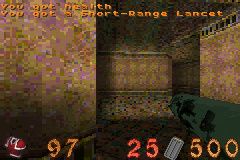

To be clear, this port isn’t the full game, and it’s a prototype that Linden intended on taking to id Software once it was completed to be made for release. However, the Game Boy Advance’s popularity began to wane, and instead, the custom engine written by Linden later became the engine of another game developed by Linden entirely — Cyboid. Linden tells us that a “large chunk of the code” is still the original ARM code from the Game Boy Advance version. If you want to try out Cyboid, an older version is available on the Google Play Store, but the official APK is now distributed on the Amazon App Store as the game has a lot of low-level 32-bit code.
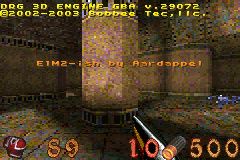


Linden also shared with us a video of his code running on the iPod Video, which served to be one of the earliest versions of Cyboid. It was built on the same engine code that was used for his Quake port to the Game Boy Advance.
The Game Boy Advance port of Quake doesn’t contain any of the game’s official assets, as Linden hasn’t reached out to either id Software or ZeniMax about distributing the E1M1 version which contains official Quake assets.
The game currently being distributed is also a debug build. Holding the R key on boot-up will bring the player straight to the second map of the game, and holding left on the D-pad will bring them to the third. Map swapping can also be accessed when the player dies, and monsters will not attack the player until the player shoots at them first.
As for music, the demo makes use of public .S3M files and the sound mixer handles both stereo music and sound effects.
Technical boundaries
There were a number of boundaries when it came to the Game Boy Advance that made this a difficult port. Some of the biggest obstacles were the low clock speed, the lack of 3D graphics capabilities of the handheld, and the lack of a floating-point unit (FPU). There were plenty of others along the way, but these were particular pain points that Linden outlined to me as being problematic. Before we get into it, it’s important to understand the layout of the Game Boy Advance.

Screenshot used with permission from Modern Vintage Gamer
The Game Boy Advance has three sets of RAM — one is the internal work RAM (IWRAM), another is the external work RAM (EWRAM), and the third is video RAM (VRAM). The 32kb of IWRAM is used for storing ARM instructions for quick execution, whereas the 256kb of EWRAM is optimal for storing Thumb-only instructions and smaller chunks of data. As Rodrigo Copetti notes, EWRAM can be up to six times slower to access than IWRAM. The majority of memory in the form of EWRAM is only accessible via a 16-bit bus, despite the Game Boy Advance being marketed as a 32-bit handheld. The IWRAM could be accessed via a 32-bit bus. VRAM on the Game Boy Advance comes in at 96kb, and while it’s primarily for storing graphics data, it’s found in the CPU’s memory map and can be used as normal memory storage, too.
Thumb instructions are a subset of 32-bit ARM instructions, and are a set of instructions encoded into 16-bit words. They have all the benefits of 32-bit instructions without taking up as much space, making them efficient for optimized development. This means that while EWRAM is slower to access, Thumb instructions being efficient can often still end up just as fast as ARM instructions stored in IWRAM, though the downside of Thumb instructions is that sometimes there isn’t quite the Thumb equivalent of an ARM instruction you want to execute. The EWRAM was used for storing the output of the 3D math transformation logic which was basically the list of polygon edges that were then traced out scanline-by-scanline by the rasterization code.
As Linden tells me, the most complex and difficult part of the entire port was the scanline renderer. It consists of over 10,000 lines of highly-optimized ARM assembly code which is designed to draw a set of pixels to VRAM. The scanline renderer used up most of the 32kb IWRAM. The edges closest to the camera are active and rendered, and it’s essentially a large Binary Space Partitioning (BSP) tree. VRAM was used to store the results of the polygonal transformation output into edge tables because there wasn’t enough IWRAM, but VRAM on the Game Boy Advance is still faster than EWRAM. The graphics were also stored and displayed here.
He spent a lot of time focusing on optimizations to ensure that it was able to obtain the fastest execution time possible. Three things that he did to speed up that execution time included the following:
- Self-modified the code before it was executed, so fewer instructions were required
- Used a series of look-up tables for things like reciprocal, sine, cosine, tangent, etc.
- Switched the CPU “mode” to gain access to additional registers (that are like “variables”) without having to save and restore the registers’ values.
Switching the CPU modes to gain additional registers is an incredibly clever maneuver that allows quick access to values close to the CPU so that they can be retrieved in a single clock cycle. As Linden tells me, it was possible to switch registers and retrieve a value in one clock cycle, as opposed to storing a value in the RAM of the Game Boy Advance, which takes longer. The CPU itself is a 16.78 MHz processor, meaning it can complete 16780000 cycles per second. That sounds like a lot, but when you need to calculate and draw every pixel on the screen, those quickly add up and it becomes important to shave as many operations off as you can.

The above is the list of general registers of the ARM7TDMI chipset that’s inside the Game Boy Advance. Typically, developers would only ever access the registers within the “System and User” mode and resort to using normal variables outside of that. However, he made use of registers in all seven modes of the chipset, and the best part about it is that switching modes still retain the values in the registers of the other modes, so he could switch between them.
Funnily enough, Linden also mentioned how his method of bank switching unearthed a bug in the Nanoboy Advance emulator. As it turned out, that emulator did not support using the other modes of the CPU for saving in registers and switching, and his Quake demo was the first known game to actually do it.
Linden shared a photo with us of some of the notes he created and explained how he optimized his floating-point calculations in absence of a proper FPU.

The above image is one that Linden shared with us from his notes, and what’s particularly interesting is the “miscellaneous ARM cycle instruction counts”. He devised a way to optimize the cycles for calculations so that he could reduce the number of clock cycles for a calculation. As he described it to me, an 8-bit number could be multiplied in one clock cycle, a 16-bit number in two clock cycles, a 32-bit number in three clock cycles, and a 64-bit number in four clock cycles.
“There were two or three stages of execution [in the ARM processor]. Say for example I multiply register one by register two and put the result into register three. If I knew that register two was a 16-bit number instead of saying multiply register one by register two, I would flip it and I would say multiply register two by register one because that would save me a clock cycle.”
He told me that the reason he did this was to squeeze every bit of performance out of the Game Boy Advance, as a clock cycle saved here and there really adds up when a lot of calculations are being performed. As for the self-modifying code, I asked Linden to explain it.
“The program comes from [storage], it transfers a big block of the program into internal RAM for execution because it’s faster. Each RAM access is much, much slower so I do a DMA [Direct Memory Access] of a big block from ROM into RAM, and then I change the actual program code. For example, ARM has the ability to shift operands left or right or it can mask off certain bits as part of the instruction set. The instruction specifies which bits you’re going to mask or how many bits you’re going to shift by. So, I would generate code that would modify what was just about to be executed based on how many bits I needed to shift. Another example is with regards to 3D matrix multiplication. There are a whole bunch of multiplications involved there. I would generate the actual instructions that are doing the multiplications into the internal RAM and then execute them so the code sort of built portions of itself while it was running.”
Self-modifying code has its own downsides, in particular when it comes to debugging. It removes the need for branch instructions too, where the code would jump to another execution sequence and can deprive the main thread of precious computation time. Linden also told us that the look-up tables are perfectly aligned in the ROM so that they are a perfect multiple of an eight-bit value shifted left. The size of the look-up table is immense and doesn’t fit into RAM, and the alignment also avoids the need for an extra load instruction to get the base address of the table.
All in all, the final prototype was developed over nearly two years.
The future of Randy Linden’s Quake port
I asked Linden what would happen to the future of the Quake port, and he told me that he was putting consideration into asking ZeniMax and id Software about releasing the version with official Quake assets. He also told me at some point he will release the source code, but currently, it doesn’t build as it requires an older computer.

Randy Linden’s setup for connecting a Game Boy Advance to a computer for development.
I asked Linden why he chose Quake, and he told me that he loved the game and he loved the challenge of this being the “impossible project”, as it was off the back of his DOOM for SNES port. He also mentioned that while he does not believe the entire game could have been ported due to space constraints, the vast majority of the game could have been in the same engine.
If you’re interested in checking out Quake for the Game Boy Advance, be sure to check out the release of it on Forest of Illusion, which you can check out below.
Download from Forest of Illusion
The post The story of the impossible port: How Quake was ported to the Game Boy Advance appeared first on XDA.
Adobe Plans To Make Photoshop on the Web Free To Everyone
Read more of this story at Slashdot.
How Long It’ll Really Take You to Save for a Down Payment

You may have noticed that houses are hella expensive right now—according to the Zillow Home Value Index, a typical home in this fine capitalist paradise now costs nearly $350,000. There are obviously homes for sale for much less (and much, much more), but that may still seem like a disheartening statistic if you’re…
The fine line between representing and appropriating Asian culture

Disney's Ms. Marvel just hit the company's streaming service this month, and the promotional machine for the series touted its "positive representation" of Southeast Asian Islamic culture. I put positive representation in quotes because, as a Muslim, the show seems fairly light on "representation" beyond the surface level. — Read the rest
The Texas Chain Saw Massacre Is A Video Game Now, Watch A Brutal New Trailer
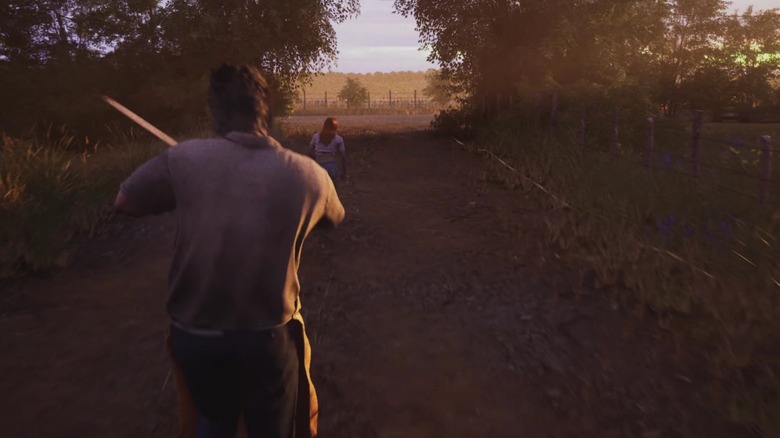
One of the scariest horror movies of all time is about to become a video game, and judging by the looks of the new gameplay trailer for "The Texas Chain Saw Massacre," it's going to be a bloody one.
The new game by Gun Interactive seems to recount the events of the 1974 Tobe Hooper horror classic, with a twist. According to Games Radar, the game will feature a twisted multiplayer mode that will allow players to take on the perspective of either the helpless teens or the skin-clad cannibal killers. Check out the new unrated gameplay trailer — which, fair warning, gets gory — below.
The Game Ups The Gore
While last December's game trailer showed a suspense-laden adaptation of the definitive slasher, the new footage shows a much more brutal look at actual gameplay. There's plenty of screaming, running, and blood-spurting across the minute-and-a-half promo, which puts us in both the villain and hero POVs. In fact, the gameplay trailer opens with the sound of a woman's screams before it even shows any footage.
The game, which the trailer indicates will likely get a 17+ rating, seems to pull directly from Hooper's imagery. The sun-dappled but ominous rural farmhouse, the bone decor, and of course, the presence of infamous fictional killer Leatherface are all borrowed from the '74 film. The main difference? This new take seems extremely focused on violence and gore, with this gameplay run-through wasting no time on setting the scene. Instead, we have a front-row seat to several stabbings and guttings.
"The Texas Chain Saw Massacre" game also employs one of the oldest tricks in the book, which, coupled with its front-and-center violence, will surely cause a stir. The promo begins with a title card that says "A game based on true events," a callback to the film's scrolling introduction which claimed it was based on a true "account of the tragedy which befell a group of five youths." No matter that the story only bears a slight resemblance to that of serial killer Ed Gein: Hooper declared it a true story, and struck fear into the hearts of a generation of viewers in the process.
Gun Interactive's game looks like it could do the same. Per GamesRadar, the game will be able to include up to seven players — three killers and four (hopefully) survivors. The title will be available in 2023 for Playstation 4, Playstation 5, Xbox One, Xbox Series X/S, and PC.
Read this next: The 20 Best Clone Wars Episodes Ranked
The post The Texas Chain Saw Massacre is a Video Game Now, Watch a Brutal New Trailer appeared first on /Film.
Jurassic World Dominion Botches The Franchise's Biggest Mystery
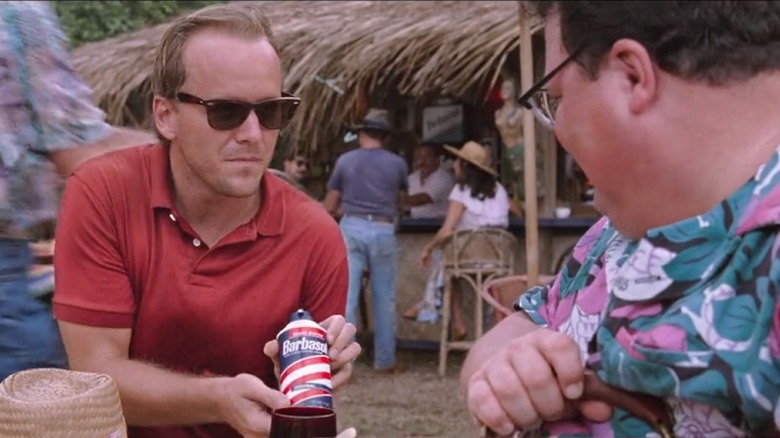
This post contains major spoilers for "Jurassic World Dominion."
With the release of "Jurassic World Dominion," one of the biggest movie franchises in the history of cinema approaches something that is meant to feel like closure. After all, this is the end of the current trilogy, and it brings things full circle by returning many characters from the original "Jurassic Park." Much of the marketing focus was (rightfully) put on Laura Dern (Ellie Sattler), Sam Neill (Alan Grant), and Jeff Goldblum (Ian Malcolm) reuniting on screen together for the first time in nearly three decades. But another character, an important one at that, returned to the fold in the form of Lewis Dodgson -- and he brought with him a hugely important relic from the past.
For those who may not recall, Dodgson was the man from "Jurassic Park" who delivers Wayne Knight's Dennis Nedry a bag full of cash and a Barbasol Can to transport InGen's dinosaur embryos off Isla Nublar so that Biosyn, a rival genetics company, can catch up and presumably build their own dinosaur theme park. This plot thread was intentionally severed in the first movie, but "Dominion" finally brings things full circle, albeit in a wildly unsatisfying manner.
The Barbasol Can
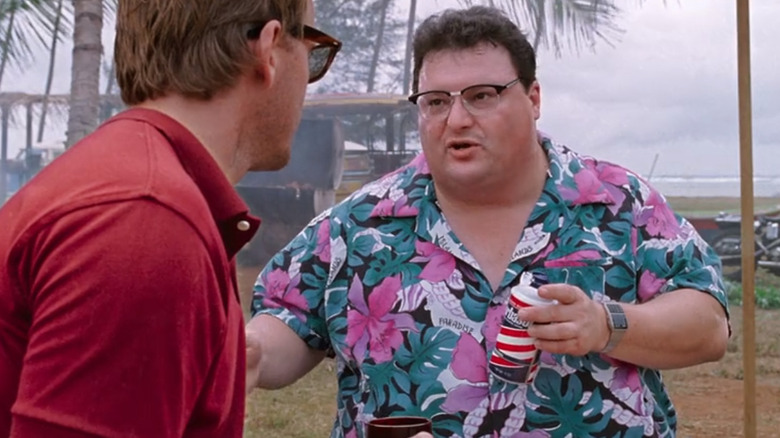
In a key scene early in "Jurassic Park," Dodgson meets with Nedry to deliver $750,000 in cash as well as a vessel to transport dinosaur embryos in a bit of corporate espionage that, in essence, sets this whole six-movie franchise in motion. The vessel in question? A can of Barbasol shaving cream that has a screw-off bottom to hide the embryos. As Dodgson states in the scene, it can hold 15 embryos and has enough coolant to last 36 hours. Unfortunately for Biosyn, Nedry meets his demise at the teeth of a Dilophosaurus in no small part thanks to a large storm that breaks out as the electric fences are shut off in the park. The Barbasol can is buried in the mud and we never see it again (at least officially speaking) in any of the sequels up through "Fallen Kingdom."
The Barbasol can became something fans have wondered about for years. Did anyone recover it? Did the embryos ever make it off the island? If so, what was done with them? "Jurassic Park: The Game," which is not officially canon, made use of the Barbasol can as a central element of its plot, and an abandoned version of "Jurassic Park 4," the one that might have involved human/dino hybrids, also would have used the can. But it's not until the third act of "Jurassic World Dominion" that the McGuffin makes its unceremonious return nearly 30 years later.
Dodgson (played Campbell Scott, replacing Cameron Thor) is essentially the main villain of the new film, serving as the head of Biosyn after ascending the corporate ladder in the years since that fateful meeting. The movie hardly makes any direct connections to let the audience know that these are indeed the same person but, in any event, that's who he is. And he is the one who is going to reunite us with this lost relic.
A Relic Of The Past (Briefly) Returns
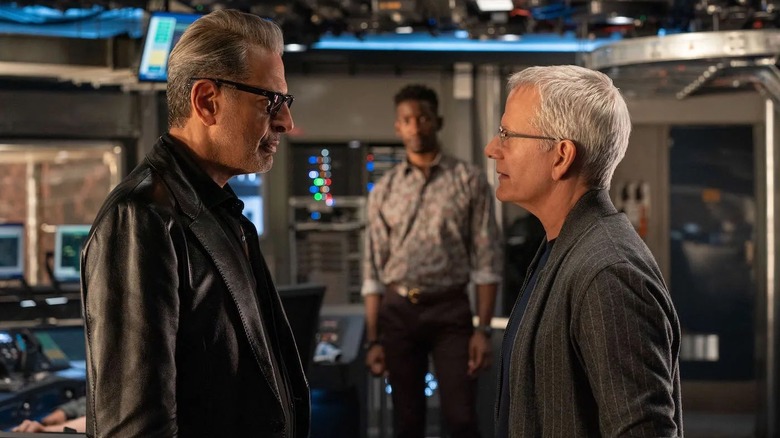
Once things go south at Biosyn's research lab, Dodgson looks to make his escape and start over with a new venture. In cleaning out his office, we see him grab a few trinkets and, wouldn't you know it, one of them is a beat-up, burned, old red and blue can of Barbasol, presumably the very same one he entrusted to Nedry all those years ago. I only say presumably because director Colin Trevorrow's movie, as it exists, does not explicitly address the long-lost can beyond showing it on screen a couple of times. It is hardly anything more than a little Easter egg in "Dominion," despite its curious history and attachment to the character we find it with once again.
This serves to frustrate in several ways. For one, the movie is nearly two and a half hours long. One would think with a runtime that meaty that if you're going to include something this important to the history of the franchise, you could actually spend some time with it rather than waste the opportunity with a little, "remember this?" on-screen moment that contributes nothing to the film. The question of why include it at all really comes to mind -- this reeks of wasted opportunity. If you weren't going to do anything with it, why not save it for a better moment?
Beyond that, the fact that the movie doesn't truly connect this version of Dodgson to the guy who briefly appeared in "Jurassic Park" takes some narrative weight out of it. If the movie had done a better job at pointing out that this was the same person, seeing the can might have at least rung some bells. Instead, it's a nothing moment that wastes something a great many fans have actually wondered about.
Jurassic Isn't Done With The Barbasol Can Just Yet
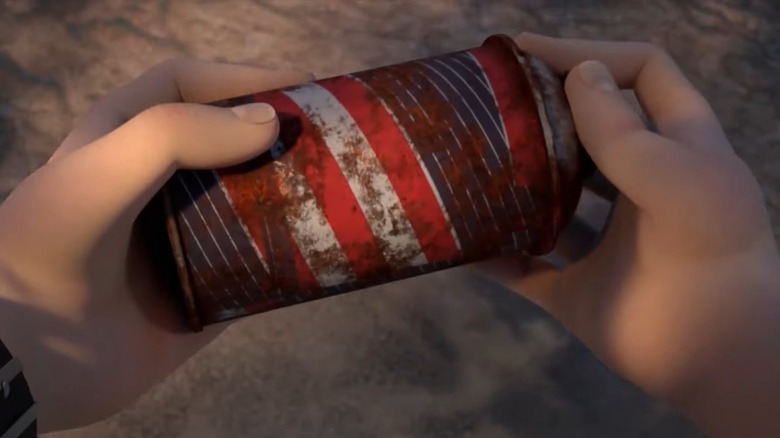
It is important to note that the Barbasol can is going to appear in the franchise again -- and very soon. The animated series "Jurassic World: Camp Cretaceous" is entering its fifth and final season on Netflix, with the show set to return in July. The teaser trailer already revealed that the can is going to show up in the series, and in an interview with The Hollywood Reporter, Trevorrow was asked about the can's retrieval and whether or not we're ever going to get any answers on that front. Here's what he had to say about it:
"If you happen to watch our animated show, Camp Cretaceous, there may be an answer to that in season five, which is coming in July. There may or may not be [an answer]. We'll see. (Laughs.)"
Now, here's the thing: I have quite liked "Camp Cretaceous," but it is very much a show aimed at younger fans that hardcore viewers can enjoy as well. The fact that they bothered to include something so important in the concluding film to this new trilogy only to have the director then say "go watch the animated show to get the answers to the questions you have" is pretty damn frustrating. Alas, that's how the people controlling the franchise currently opted to handle it. We can only hope that the answers that lie ahead in "Camp Cretaceous" are more satisfying than what we saw in the movie.
"Jurassic World Dominion" is in theaters now.
Read this next: Every King Kong Movie Ranked From Worst To Best
The post Jurassic World Dominion Botches The Franchise's Biggest Mystery appeared first on /Film.
Ben Affleck Saw Argo As His Chance To Break Out Of Boston
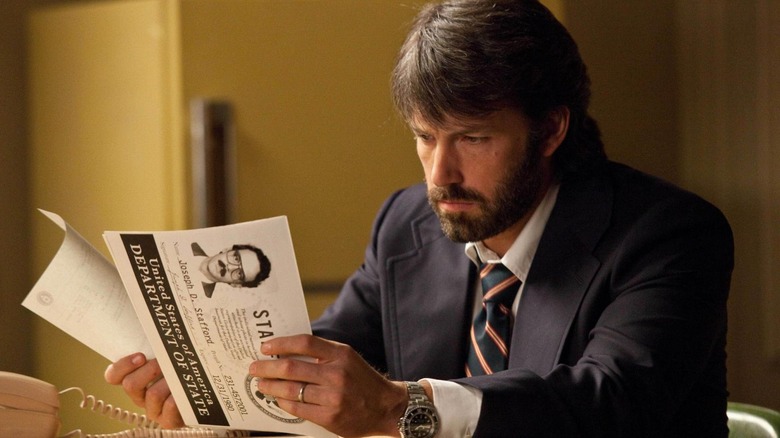
Ben Affleck is one of Hollywood's most accomplished actors and a proven writer, producer, and director. He began in low-budget indie films and worked his way up to some of Hollywood's biggest blockbusters. But that wasn't always the case. In fact, at one point it seemed like Affleck might be stuck in his hometown of Boston — at least when it came to making his films.
Affleck was a burgeoning young actor in the early 1990s, starring in Kevin Smith's "Mallrats" and "Chasing Amy" when he co-wrote and co-starred in the 1997 film "Good Will Hunting" with Matt Damon. After the success of the film, he began dabbling in more writing and producing. In 2007 he wrote, produced, and directed "Gone Baby Gone," a crime thriller set in Boston. The film was received well by critics and was a moderate success at the box office.
Affleck returned to the scene of the crime, so to speak, using the same formula in his next directorial effort. In 2010 he would write, produce, direct, and star in the crime thriller "The Town." Like before, the film was met with positive reviews, only this time it blew up at the box office. The film grossed more than $154 million worldwide according to Box Office Mojo.
Despite the successful formula, Affleck made it a priority to stay away from Boston for his next project. Affleck told Rolling Stone:
"I knew I had to get out of Boston and stop making movies there, at least for one movie, otherwise no one would ever consider me for a movie that took place south of Providence. I honestly felt like I would kind of end up being pigeonholed as Boston Crime Guy."
And move away, he did, to a film with multiple locations and major historical significance.
From Boston To Best Picture
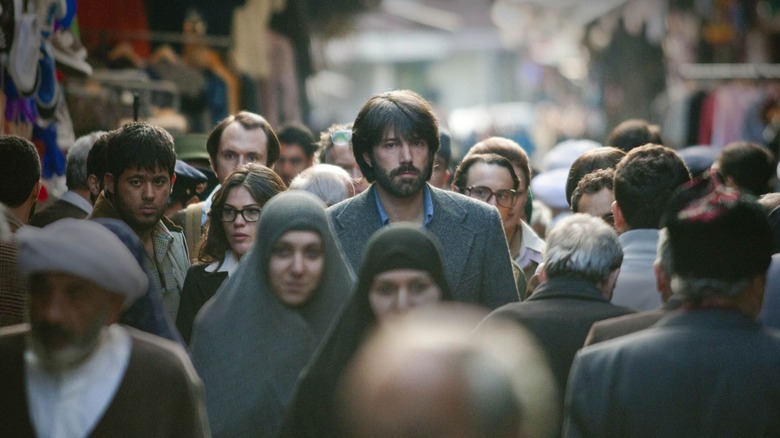
Affleck cemented his legacy as a director with the ambitious 2012 historical thriller "Argo." The film documents the true story of CIA operative Tony Mendez's plan to rescue six Americans hiding at the Canadian Ambassador's house in Tehran during the 1980 Iranian-U.S. hostage conflict. Mendez and the Canadian "house guests" posed as a film crew to fly out of the Tehran airport to safety. To extract the group, Mendez needed cooperation from multiple government agencies, several countries, and some real Hollywood players.
"Argo" magnificently captures the late '70 and early '80s from the opening seconds of the film, opening with a retro Warner Bros. logo. The costume and production design expertly re-creates the era, and the film pays homage to early science fiction films from the beginnings of Hollywood's blockbuster era.
Affleck offers a clinic in tension, with a slow-building rising action that features a rescue straight out of Hollywood – because that's what it is based on. The idea of posing as a film crew to escape the country was pitched by Mendez to the CIA as "the best bad idea." Unwitting audiences not familiar with the hostage crisis are treated to a fast-paced plan that Mendez wills to fruition. The look, feel, mood, and pacing of the film are all perfect, worthy of the film's many accolades.
Although "Argo" takes liberties with some truths in the name of building narrative conflict - which is true of any "based on a true story" Hollywood film - it remains mostly true to the spirit of the rescue. And even though the film won an Academy Award for Best Picture along with two additional Oscars and seven total nominations, Affleck was strangely absent from the Best Director nominations.
Despite the snub, the decision to move far from Boston for his next project paid huge dividends for Affleck.
He's Returning To The Director's Chair
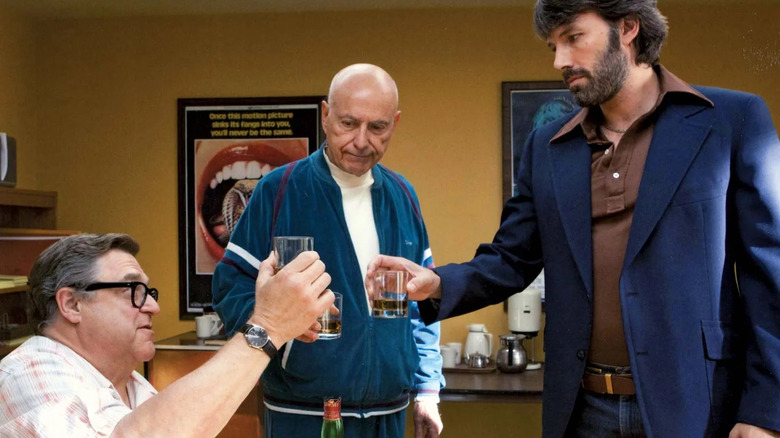
Since "Argo" Affleck curiously only has one film on his director's resume, the 2016 gangster period piece "Live by Night." Despite a talented cast headlined by Affleck and Elle Fanning and a large budget, the movie was met with mixed reviews and tanked at the box office, losing $75 million. But it seems after some time away from the director's chair, Affleck has gotten the itch again.
Affleck has several projects on the horizon. He is currently directing a Nike biopic about Sonny Vaccaro, the Nike executive responsible for signing Michael Jordan. The project reunites Affleck and Damon, who will play Vaccaro. He's also slated to direct the Agatha Christie adaptation and a remake of the 1957 Billy Wilder film "Witness for the Prosecution" as well as the Disney sci-fi film "Keeper of the Lost Cities."
Whether it's a successful long-term partnership with Damon or directing a Best Picture film on his own, Affleck proved that the decision to leave Boston to tell different stories was a wise decision. Despite his lengthy filmography as an actor, Affleck's upcoming schedule indicates that he's just getting started as a director. It's hard to imagine that happening had he stayed at home comfortable as the "Boston crime guy."
Read this next: /Film's Top 10 Movies Of 2021
The post Ben Affleck Saw Argo As His Chance To Break Out Of Boston appeared first on /Film.
Leonard Nimoy Was A Constant Presence For Ethan Peck During Star Trek: Strange New Worlds
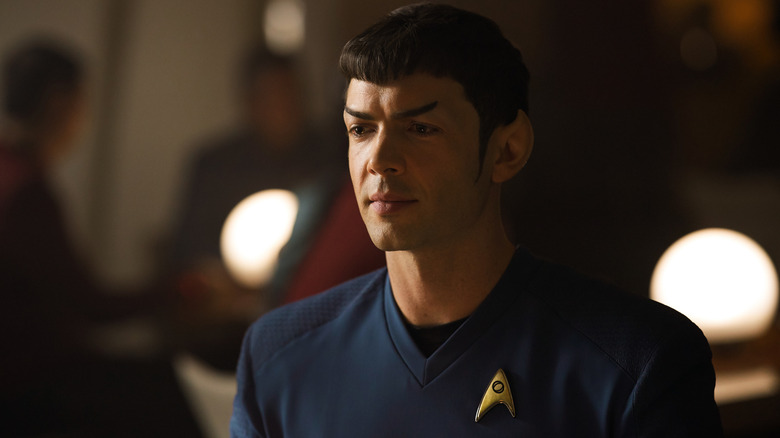
Recasting a world-famous and widely influential role is never a simple task, no matter how obvious or easy a perfectly-cast actor may make it seem in retrospect. "Star Trek" has had great success (and luck!) in this department over the years, most famously with Chris Pine as Captain James T. Kirk, Zachary Quinto as Spock, and the rest of the cast put together by J.J. Abrams for the recent reboot trilogy. Those movies had an easier time justifying such a wholesale recast, however, thanks to the timeline shenanigans that allowed the 2009 film to serve as a reboot, a prequel, and even a quasi-sequel all at the same time. The presence of Leonard Nimoy's older Spock in the first two movies (along with the touching way that "Star Trek Beyond" incorporated the legendary actor's passing into the plot) helped ease the transition even more.
"Star Trek: Discovery" had no such safety net when the writers decided to set the new series just before the events of "The Original Series" and then brought in Captain Pike, Spock, and Number One during the show's second season. Not only did that risk pay off when viewers immediately embraced Anson Mount, Ethan Peck, and Rebecca Romijn as the new version of the trio, but that eventually led to the creation of their very own spin-off, "Star Trek: Strange New Worlds."
Perhaps nobody in the cast faced more pressure than Peck in terms of living up to the standard left by Nimoy. With "Strange New Worlds" currently airing new episodes on a weekly basis, viewers can practically see the actor growing more and more comfortable in the role. To no great surprise, achieving the balance of channeling Nimoy while bringing his own take to the character was difficult ... but Peck had some help from Nimoy himself.
'The Custodian Of This Character'
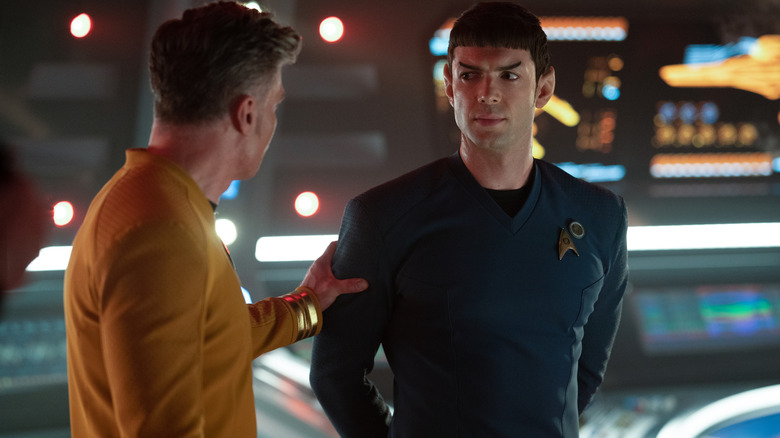
When is it ever a good thing to hear voices in your head? Probably when you're an actor tasked with the impossible: stepping into Leonard Nimoy's shoes as the pointy-eared Spock. In an interview with /Film, Ethan Peck once stated that, "...I feel like [Leonard Nimoy's] voice is so inculcated in my mind and my performance when I'm preparing for this. So I feel like I check in still with that voice." While he didn't quite mean that literally, the point is well-taken. Every choice he makes, every raise of his eyebrow or modulation of his voice, comes filtered through the perspective of how his predecessor would've done so.
In a press conference ahead of the premiere of "Strange New Worlds" (via TrekMovie), the actor once again referenced that voice when talking about the challenges inherent in embodying Spock:
"I think I'm more comfortable at this point in time with the onus of being the custodian of this character. But I still read things in scripts that I get, and I'm like, 'I have no idea how I'm going do this, or how it will be true to Spock.'"
"...Constantly I'm revisiting -- I say sort of crazily -- literally Leonard Nimoy's voice in my head when I'm doing a lot of these scenes. Does this sound right? Does it feel right? I am constantly in with, 'I hope this is in the spirit of his Spock' and am channeling it as well. And then there are things that are written for my iteration of Spock that has not been written before. And that is my privilege as an actor, and as this Spock."
Peck can rest assured that he's done right by Leonard Nimoy in bringing to life the one and only Spock.
Read this next: Every Star Trek Show And Movie In Chronological Order
The post Leonard Nimoy Was A Constant Presence For Ethan Peck During Star Trek: Strange New Worlds appeared first on /Film.
Diablo boss says Diablo 4 is a “full price game,” but will have “optional cosmetics”

Press X to doubt
So all eyes are on Diablo 4, which is due out "in the next 12 months" according to a statement made during the Microsoft Xbox Conference this past weekend. Overwatch 2 hasn't fared so well in the public eye ever since it was revealed, and Diablo Immortal has been earning the ire of players all over the world. When coupled with Warcraft III: Reforged and all the other goings-on at Blizzard, the company has a clear image problem. Diablo 4 cosmetics likely won't fix that.
In any case, it hopes to solve those problems with Diablo 4, which is now seemingly the golden goose that will restore some of the company's reputation: at least in the eyes of some execs. But they're having a hard time selling it given, well, everything we just talked about above.
Following criticism that flowed via Immortal, Blizzard's GM of the Diablo franchise, Rod Fergusson, took to Twitter to defend the upcoming mainline entry. He explains:
"To be clear, D4 is a full price game built for PC/PS/Xbox audiences. We are committed to delivering an incredible breadth of content after launch, for years to come, anchored around optional cosmetic items & full story driven expansions."
So, reading between the lines, this seems to imply that there could be a lack of paid gameplay-impacting items, but with modern Blizzard, you never know how that might turn out in the end. The big straightforward takeaways here is that it's still a "full price game," with "optional Diablo 4 cosmetics" (that's going to be a yikes from a lot of people given that they just reconfirmed it's a full-price game) and "full story-driven expansions" (which could be good, but how is this being monetized, is the question).
Also, what about the inevitably of a season pass? This was likely already talked about behind closed doors, but not confirmed (this listing doesn't bode well on that front). In any case, under duress, we have a bit more info on Diablo 4 now. Optimistically, under Microsoft, the company could improve overall, and "years to come" of content could be a step up from what Diablo 3 ended up getting. But I know a lot of people understandably aren't betting on that.
The post Diablo boss says Diablo 4 is a “full price game,” but will have “optional cosmetics” appeared first on Destructoid.
When Anime Is No Longer Exclusively Made In Japan, Is It Still Anime?
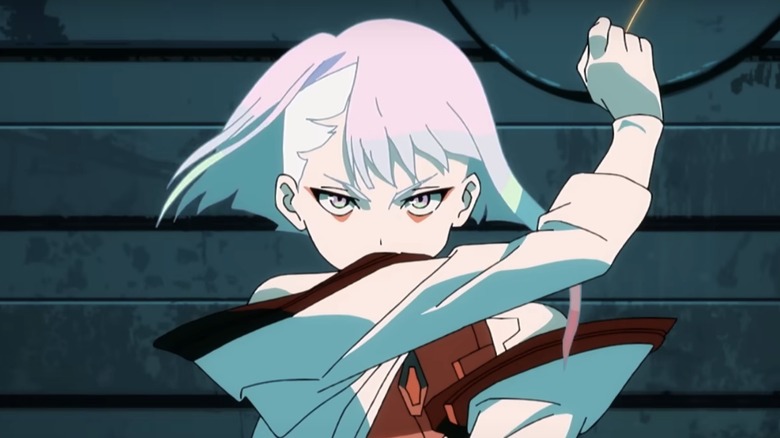
One of the more exciting animated projects set to debut on Netflix this year is "Cyberpunk: Edgerunners." Based on the highly promoted (and barely finished) video game, the series was pitched as a new production by the famous Studio Trigger. Bombastic action specialist Hiroyuki Imaishi is directing, wunderkind animator Yoh Yoshinari is contributing character designs, and much of the studio's creative brain trust is on board. Not to mention some first-time collaborators, like "Silent Hill" composer Akira Yamaoka. Imaishi is a wild card; he's best known today for his collaborations with the scriptwriter Kazuki Nakashima, but his early works like "Dead Leaves" forsake logic and characterization for rude cartooning. A cyberpunk anime produced by his team could be relentlessly kinetic and creative, embarrassingly puerile — or both!
But in the recently revealed "Edgerunners" credits, CD Project Red executive Rafal Jaki and comics writer Bartotsz Sztybor are listed above the Japanese scriptwriters, credited for "showrunner" and "screen story" respectively. The two of them appear in a video interview provided by Netflix for Geeked Week, with only a brief appearance by Yoshinari, Imaishi and Otsuka at the end. Listening to Jaki and Sztybor breathlessly praise Trigger's capabilities, I couldn't help but wonder: is "Edgerunners" a CD Projekt Red production, or a Trigger production? Trigger is best known in the industry for its original series. How much influence does the studio really have over a collaboration of this kind?
Fellowship Of The Ring
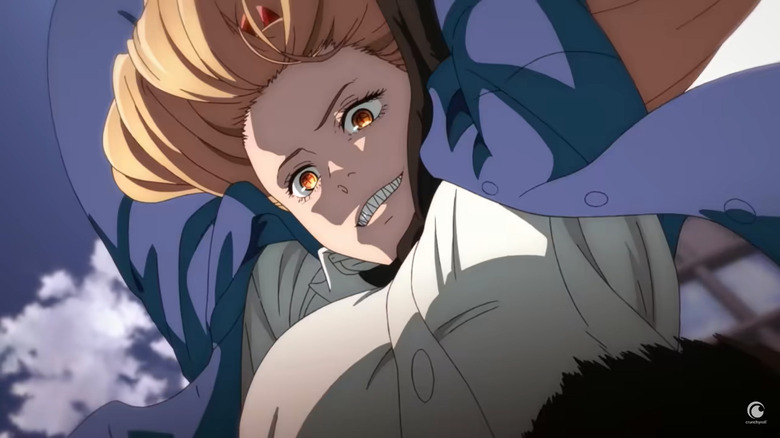
Anime is more popular today than it has ever been. The creative director of anime at Netflix, Kohei Obara, stated in a Variety article that more than half of their viewership watched anime on the platform in 2022. (The actual length of time spent watching was not specified.) In 2021, the anime streaming site Crunchyroll announced it had achieved 5 million streaming subscribers and 120 million registered users. Today the battle for licensing is fierce, with streaming services fighting for the rights to future hits like "Chainsaw Man." Even Disney Plus has entered the fray, picking up titles like Science Saru's "Tatami Time Machine Blues." International co-productions have also become increasingly common. While some of these projects have been original series, the majority have so far been adaptations of existing intellectual property.
One such example is the upcoming "The Lord of the Rings: War of the Rohirrim," an anime film set to build upon details from the earlier live-action trilogy. Kenji Kamiyama is to direct at Sola Entertainment, a studio whose output includes the ongoing "Ultraman" anime as well as "Ghost in the Shell: SAC_2045." The other announced names are all directly connected to the film trilogy, including writer Philippa Boyens, her daughter Phoebe Gittens and art director Alan Lee. No other Japanese creative staff is credited. It could be that Warner Bros made a choice in their marketing to highlight names that viewers from the United States might know. The alternative is that they see Kamiyama's crew as a means to an end, rather than giving them the respect they deserve as artists.
The Castlevania Conundrum
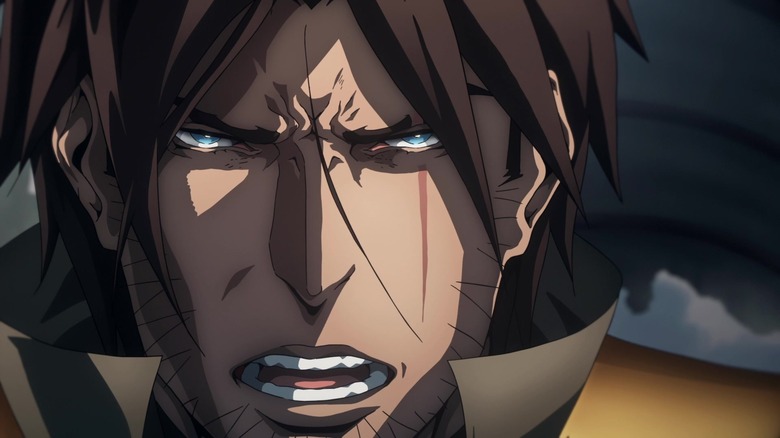
While "The Lord of the Rings: War of the Rohirrim" is at least partially produced in Japan, many of Netflix's recent "anime" titles are not. One of the network's biggest successes is "Castlevania," an adaptation of the Japanese video game series scripted by influential (and disgraced) comics writer Warren Ellis. The staff of "Castlevania" are unabashed anime fans who loaded the show's signature fight scenes with impact frames and tricky effects animation. But the series was produced not in Japan but at Powerhouse Animation Studios, located in Austin, Texas. "Castlevania," along with "Blood of Zeus" and the recent "Masters of the Universe" animated series, have been lumped under the "anime" label despite lacking a connection to the industry. The service's other video game adaptations have been marketed similarly.
What does it matter if a product is labeled "anime" or not? As far as I can tell, it comes down to branding. Anime is popular, but "cartoons" in the United States are still associated with children's programming. Netflix labels their adult animated series "anime," anime fans check them out, everyone wins. My problem is less with the "anime" label and more the lack of respect afforded to the animation staff in this scenario. As a supposed mover and shaker in the entertainment staff, Netflix has the chance to give animation studios abroad a chance to come up with their own exciting ideas. Instead, Netflix often follows the hoary United States tradition of animation outsourcing. The showrunner and writer's room remains in-house, character designers and storyboarders send detailed instructions to countries like South Korea and the Philippines, and the underpaid animators who do much of the work never receive the recognition they deserve.
Trust And Respect
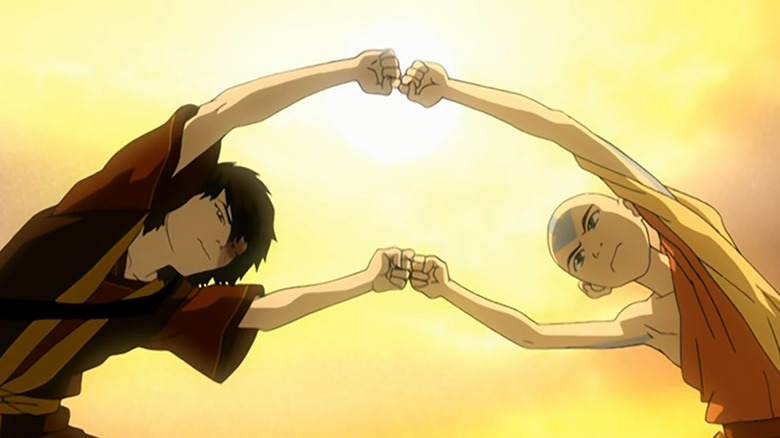
It doesn't have to be this way. Over the past decade, there have been artists who chose to work directly with their outsourcing staff rather than taking their work for granted. The all-time greatest example may be "Avatar: The Last Airbender." According to a video by The Canipa Effect, producer Brian Konietzko took the time to personally meet with animation staff in South Korea before the series went into production. These animators were given unusual control over aspects like character design, effects drawings, and even animation timing. The great writing and storyboarding in "Avatar" was pushed to even greater heights by the efforts of its Korean animation staff, creating a modern classic that has still not yet been equaled within its niche. According to Callum May, the creator of The Canipa Effect, "it was the creative trust between the staff in the US and Korea that made it special."
One of the lead animation directors from "Avatar," Jae-Myung Yu, would go on to found Studio Mir. Studio Mir produced much of the ambitious "Avatar" successor "The Legend of Korra," and was then contracted by DreamWorks to produce the fan-favorite series "Voltron: Legendary Defender." Since then, they've produced countless "anime" productions for Netflix, including the film "The Witcher: Nightmare of the Wolf." It is clear from interviews that they take great pride in their work. In an interview with Polygon, "Nightmare of the Wolf" director Kwang-il Han says of studio founder Yu that "whichever project he was working on, he poured his heart into it and took ownership of it creatively, even if it wasn't an original work." Similarly, Han speaks of developing the character of Vesemir through adlibs in the boarding process via a ScreenRant interview.
Let It Be Studio Mir Style
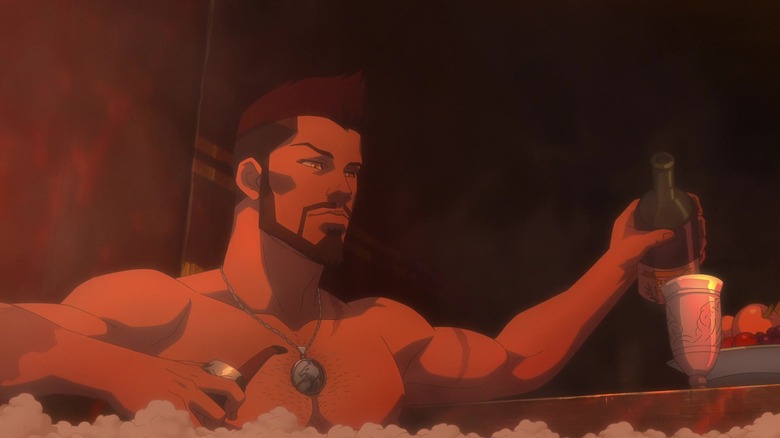
The quality and breadth of their work have made Studio Mir one of the best-known South Korean animation studios internationally. Their print has become strong enough that when asked by Netflix producers whether to emulate Japanese or American style, their response was to follow the "Studio Mir" style. Yet the work of Studio Mir continues to be lumped by Netflix under their broader anime banner. At the same time, even as Studio Mir has proven itself again and again, they have not once been given the freedom by partners like Netflix or DreamWorks to create their own original series. Instead, they are harnessed to produce endless contract work for streaming libraries.
Rather than see these animators toiling on franchise movies and television series for the rest of their days, I would love to see what they might come up with on their own. For instance, director Kyohei Ishiguro was hired to direct "Bright: Samurai Soul," an animated prequel to a movie nobody I know actually liked. Why not instead fund a film more along the lines of "Love Bubbles Up Like Soda Pop," a film that plays more to his strengths yet was delayed from its 2020 release by COVID-19? Similarly, I'd love to see Studio Mir be given the opportunity to produce original work, or at least decide what property they would like to adapt rather than accept work for hire. Not to mention that Japan has many talented directors and animators, like the talented Rie Matsumoto, who nobody in the industry seems to know what to do with. Maybe when she isn't making incredible commercials for Pokemon, somebody could pay her and her team to finally make the movie they've been threatening for years?
Anime Is A Global Medium

It's not that simple, of course. Up until now, I have been insisting in this article that there is a clear break between streaming services in the United States and the Japanese anime industry abroad. This was debatably true several years ago, but is no longer true anymore. As our friend Callum May has said, anime is a global medium. Streaming services like Netflix and Crunchyroll directly produce and fund series aimed at international audiences. Licensing fees paid by these services are often high enough to cover the cost of anime production itself. As of 2020, according to a report by the Association of Japanese Animations, the global anime market surpassed that of Japan for the first time in history. While anime is not quite as mainstream as films produced by Disney, the medium is now well on its way for better or worse.
Over the past few years, the boundary between Japan's anime industry and the rest of the world has become increasingly permeable. Background artists like Kevin Aymeric, animation directors like Vincent Chansard, and composers like Kevin Penkin have all found success in today's anime world. Bahi JD, who once drew web animations for release on YouTube and forums, now storyboards opening sequences and handled important action scenes in Trigger's firefighter epic "Promare." At the same time, artists from the anime industry have crossed over to projects in the United States. Masaaki Yuasa boarded an episode of Adventure Time, former Trigger animator Takafumi Hori contributed to the "Steven Universe" movie, and character designer Shigeto Koyama handled the concept for Baymax in "Big Hero 6."
The Poisoned Gift
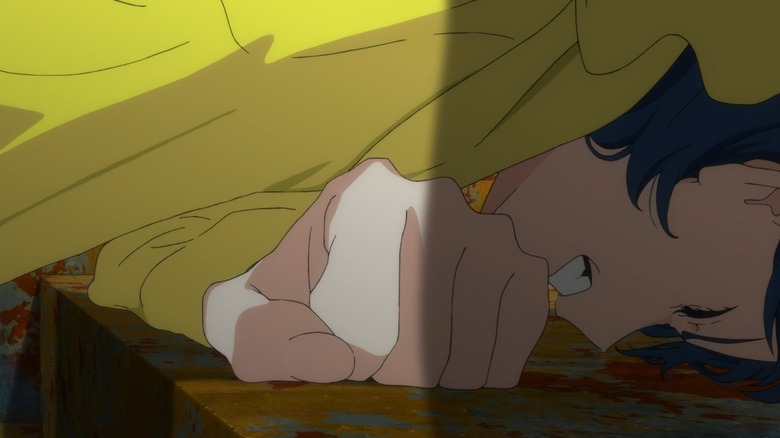
A major sea change occurred in 2021 with the release of "Wonder Egg Priority," a series created by talented young animators seeking to deliver both delicate character acting and high-octane action at a level of quality closer to film than television. After an astounding opening run of episodes, the series quickly imploded and became unfeasible to make. It was only finished due to the efforts of foreign fans hired at the last minute, including university students Blou and FAR. Considering their relative lack of experience and the hellish conditions of the show's final stretch, their team went above and beyond. Blou and FAR have continued to rise with their friends at Studio Tonton, assisting on the production of popular anime like "Spy X Family."
But in an interview at Anime News Network, the two of them warn prospective animators to be careful before following their lead. According to Blou:
"Nowadays, production assistants are quite desperate and can offer anyone who can simply draw (in some cases, even that criteria wasn't fulfilled). You might be happy to receive an offer when you aren't ready, but the truth is that it's a poisoned gift. Take your first job only when you're (more than) ready!"
The greatest danger facing today's anime industry is overproduction. Not only is too much anime being made, but the high-profile action series that find great success abroad are themselves unsustainable. As animators drop out of the industry due to low pay and terrible treatment, producers turn to foreign animators with no training and experience but enough passion to be underpaid and overworked in turn. "Chainsaw Man," produced at the high-profile but infamously mercenary studio MAPPA, threatens to become the next battleground in this ongoing struggle between sustainable art and commercial strip-mining.
Overproduction Is A Global Symptom
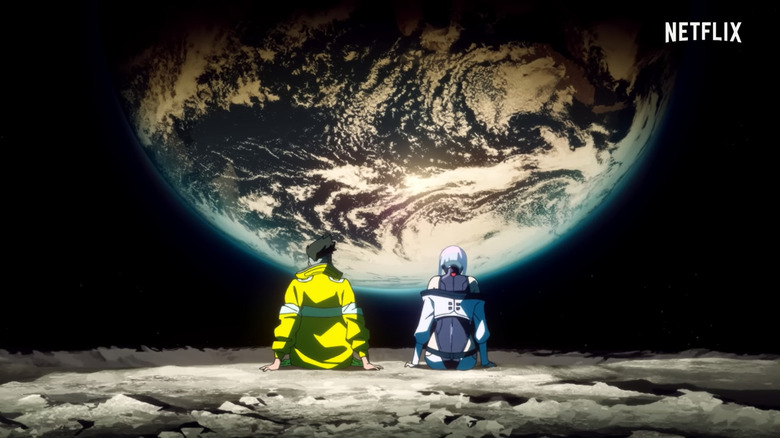
Just as streaming companies abroad have funded both anime and "anime" series for international release, producers from Japan's anime industry have begun exerting a heavier influence abroad. Today's booming anime market stands to make both the production committees that secure funding for anime productions, as well as the networks which secure those productions via licensing fees, very happy. The losers, unfortunately, are the artists. To meet the high rate of production, they must overwork themselves while cutting as many corners as possible. Adaptations are flattened. Original series, which require even more pre-production, become unfeasible. Today's anime bubble could very well pop within the next five years, a casualty of venture capitalists looking to make a quick buck from another passing fad.
Whether anime is made in Japan or elsewhere, the heroes and the villains are the same. Animators struggle to do their job successfully within short time frames and under low wages. The wealthy consolidate their power and sacrifice the long-term good of an art form for short-term profit. Meanwhile, the United States television industry faces a shortage of trained showrunners. In the special effects industry, tasks are farmed abroad to countries without worker protections in order to save on costs. If anime is a global medium, its existential threats are also global. But then, so are its solutions. At Disney Studios, animators demanded a "New Deal for Animation." The manga publisher Seven Seas recently forged a worker's union. I can't say what the future holds for the anime industry, but I'm sure that its employees have ideas. It falls upon us to remember that regardless of origin, the content that makes streaming services run is spawned from the blood and sweat of human beings.
Read this next: The 50 Best Documentaries You Can Watch On Netflix Right Now (June 2022)
The post When Anime is No Longer Exclusively Made in Japan, is It Still Anime? appeared first on /Film.
This Skyrim mod is basically Hogwarts Legacy
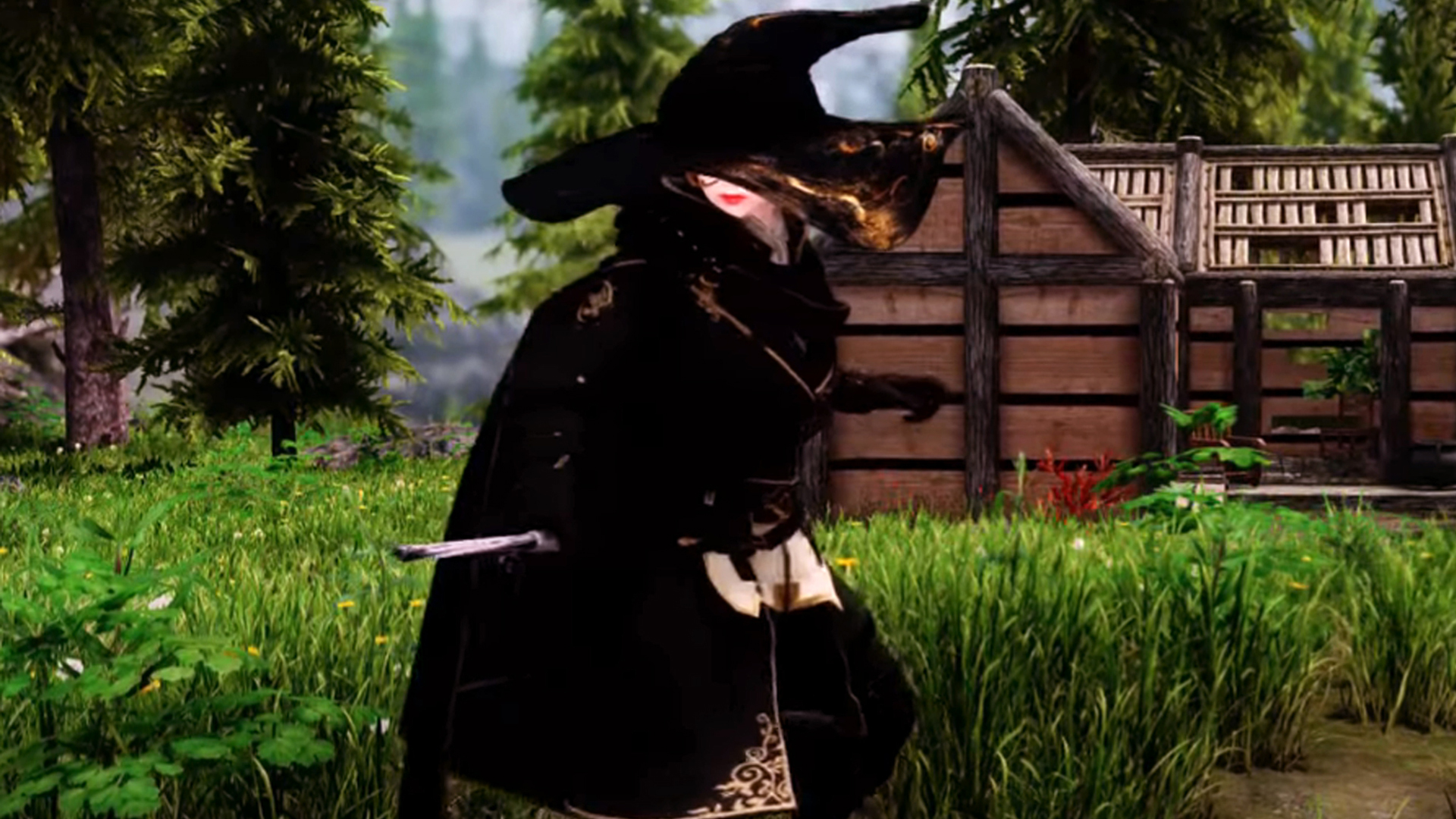
We’re still a way off from the Hogwarts Legacy release date, and if you can’t stand the wait, this Skyrim mod recreates the feel of the upcoming Harry Potter RPG game in an entirely different open-world game - or at least, the magical combat system.
One of the most impressive parts of the recent Hogwarts Legacy gameplay showcase was the fighting system, where players quickly duel with wands and zap off spells with flicks of the wrist. It looks a lot of fun, so it's a shame the game isn't out until late 2022. Luckily, modders are here to help. Elden Ring recently got a Harry Potter mod, but this upcoming one for Skyrim could have it beat.
'Hogwarts in Skyrim' by creator Smooth uses the ADXP/MCO mod as a base for smooth third-person combat, and then adds various combat moves inspired by the Hogwarts Legacy trailers - including wand attacks such as stupefy and glascius (freeze), a teleport-dodge, and some ridiculous 'ultimate' abilities like a big lightning storm.
RELATED LINKS: Skyrim mods, Play Skyrim, Games like SkyrimGenetic Paparazzi Are Right Around the Corner
Read more of this story at Slashdot.
More than 14 percent of population may have had Lyme disease. Not just in America, not just in Europe, but the WORLD population [Interesting]
The Wildest Horror Movie You've Never Seen Deserves A Remake
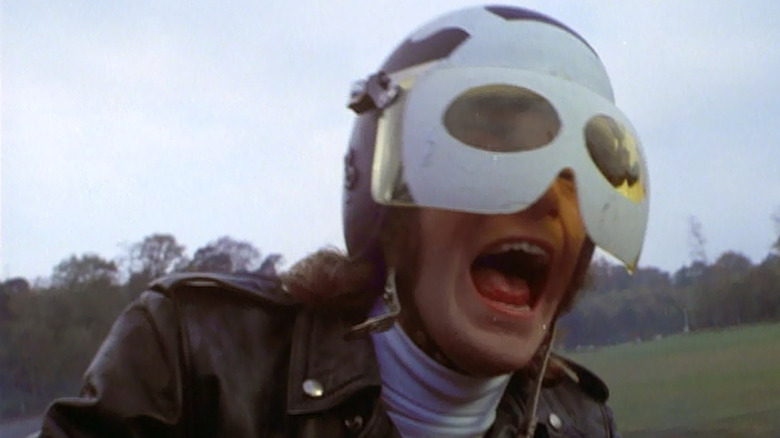
Out of the dewy curls of a mist stand some large stones. Among them, the Living Dead ride the earth, swirling their motorcycles in and out of the haze in slow-motion. The teenage dirtbags who ride them wear helmets jazzed up with a cartoonish skull and crossbones design, and personalized leather jackets. Though the script originally called for them to come creeping in Harley Davidsons, the final product shows its hoodlums silently rolling through on "clapped-out 350 AJS" that needed constant maintenance just to stay running for production. It was on these hoary road hogs that the gang of youths would run motorists off the road, terrorize innocent shoppers, and even commit a casual murder or two, all to the funky guitar riffs of John Cameron -- and that's not mentioning the Frog God or the occult dabblings.
Such is the quirky charm of "Psychomania," titled "The Death Wheelers" in the US.
The trend is for Hollywood to resurrect classic films for box office paydays, with good reason; there's usually a built-in audience from the jump and, with a story template in place to work with, some development is already taken care of. Sometimes this works beautifully -- but often not. Some of the best remakes are creative passion projects with driven artists behind them; the Coen Brothers remade "True Grit" as a more authentic adaptation of Charles Portis' 1968 novel, while John Carpenter's "The Thing," regarded by many as one of the greatest horror films of all time, topped Howard Hawks' original film by sticking to the source material while layering in the old genre standby "And Then There Were None" framework. But sometimes, the films that could really use a fresh take are the ones that were barely comprehensible to begin with, helmed by someone crazy enough to try.
Buy A Ticket, Take The Ride
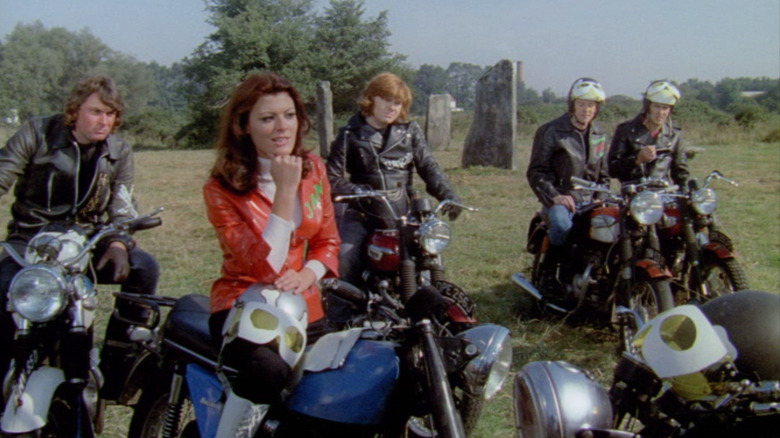
When "Psychomania" wasn't being filmed at Shepperton Studios, the exteriors were shot in Walton-on-Thames, where the gang seems to have gotten its middle class members. Only two years removed from Stanley Kubrick's adaptation of "A Clockwork Orange," the stylish Droog gang, with their degraded upper-class uniform pieces like the bowler hat and cricket codpiece, seemed more of a spiritual inspiration than an aesthetic one for this new, hip band of outlaws. The ringleader is the fanciest lad of the group, Tom Latham, who lives in an opulent home with his spiritual mother (Beryl Reid), who provides medium services for free. Both are waited on by an eloquent domestic worker, the everlasting (and never-aging) Shadwell, played by the illustrious George Sanders in his final film role.
"Psychomania" operates from the jump under the conclusion that the paranormal world exists, and wastes no time trying to explain its devilry. Latham Manor is a place steeped in black sorcery; when a grateful client attempts to gift Shadwell an heirloom crucifix, he reacts like a vampire might (pretty sure he's not). When Tom dies later on (not a spoiler), Mrs. Latham treats her son's violent death by suicide with all of the casual detachment of making brunch plans. Death is an old friend at Latham.
Would the movie be remade today, this casual, innate acceptance of the supernatural would be a treat to genre-worn moviegoers who know the rules and don't need primers anymore. Just drop them into the fictional Surrey Stonehenge (a mystical rock formation called The Seven Witches in the movie) with the Frog God and the Celtic witchcraft -- as long as composer John Cameron's funky psychedelic soundtrack brews alongside the happenings, no one has to convince the audience to suspend their disbelief to get a ticket for the ride.
The Story So Far
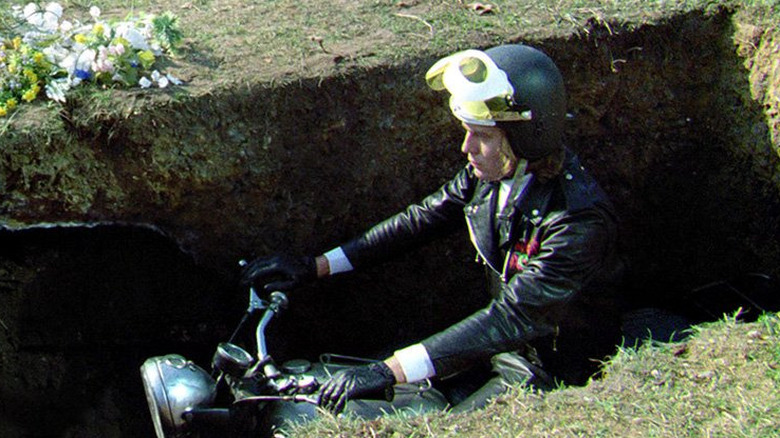
Tom is special, as seen in a trippy mirror-centric sequence filled with fugue-state hallucinations. On his 18th birthday, he learns that his family has the mystic ability to "cross over" and return in the spiritual sense -- the trick is to 1. avoid betraying the Frog God who bestowed this power unto them, and 2. simply not be afraid when he dies. Easy enough, right? Tom dutifully dispatches himself and after some juju from his mother, it works -- following a hilarious funeral scene in which he's buried upright on his bike, Tom is back and unkillable, and now he can really have some rabble-rousing fun on the road. He convinces most of the group to follow in his stead, orchestrated in a series of impressive bike stunts that surely injured a few professionals during production. Everyone follows Tom except his girlfriend Abby (Mary Larkin), doe-eyed and life-loving. Her refusal to die by suicide is a source of tension between her and the gang, who sport lovely names such as Gash (Peter Whitting), Chopped Meat (Miles Greenwood), Hatchet (Denis Gilmore), and Hinky (Rocky Taylor).
It's here that one story diverges into two, as the local fuzz are bewildered by the spree of crimes allegedly committed by bikers known to be deceased. The police procedural thread has some striking moments like a sequence of a police trap gone sour, revealed in a molasses-slow 360 pan shot, but the story is at its best when it sticks with the strange and unusual.
Anemic, But It Doesn't Have To Be
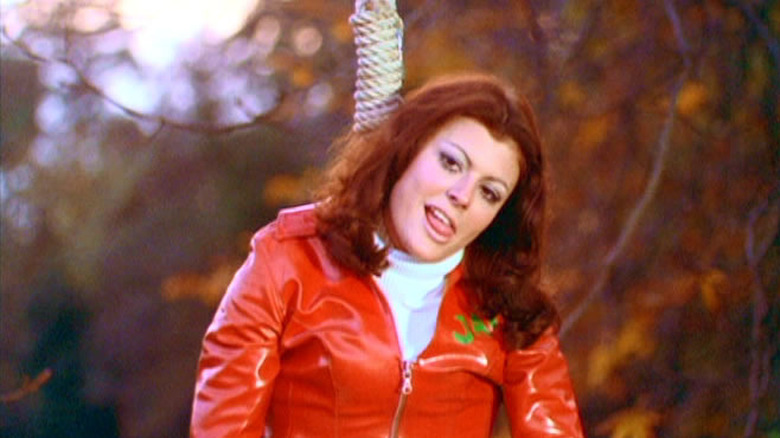
"Psychomania" was directed by Don Sharp of Hammer horror fame, whose stylized chiller "The Kiss of the Vampire" is not only Hammer's bid to do a Dracula sequel without Christopher Lee, but one of the more celebrated Hammer horror pictures of the 1960s. According to a Hammer Horror collection of interviews with the director, Sharp explains his philosophy that would later play into how he shot the Living Dead gang:
"I've always believed there needs to be a separation between suspense and shock. You lead on a mood, but if you introduce the shock moment too quickly then it's expected. It's when you hold on, keeping the same mood and tempo as the rest of the sequence, and then shatter the mood with a sudden violent moment, that it really works."
Sharp's approach is apparent in the killing scenes; for all of its death-dealing, "Psychomania" is relatively bloodless. Part of this is in the wiring: once the gang is dead and resurrected, nothing can harm them, expressed in a sequence when Tom returns from the grave to greet his mates and takes a knife to the back without blinking. Other parts, like all of the suicides and one pub massacre, have no more arrangement than telling the actor to lie down and play possum. Sometimes, suggesting the reboot of an older movie comes without specifics -- we don't know what needs tweaking, just give us the same vibes. But here, a potential remake adding a blood squib or two would help more than hurt. It doesn't have to be Texas Chain Saw-graphic, though for psychedelic folk horror with buckets of blood, Panos Cosmatos' "Mandy" is a good north star.
Midnight Movie Potential
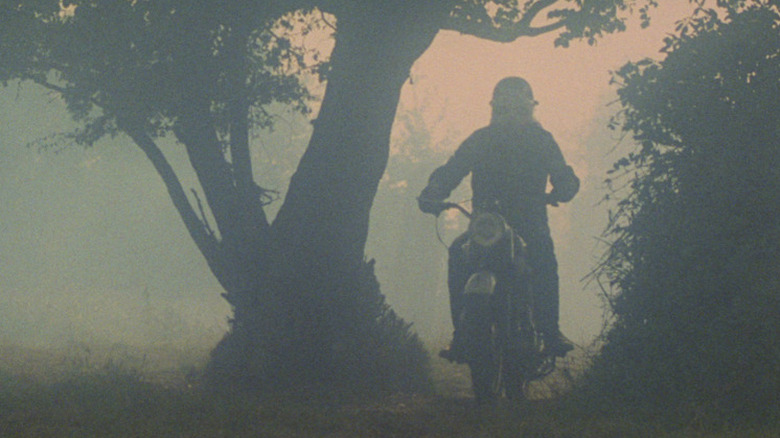
Remakes require a certain degree of humility; you can love the version or versions already made, but you must acknowledge its flaws and make changes accordingly -- simply being a fanboy isn't enough. But the right filmmaker, armed with the right level of reverence for the dreamy lowbrow kicks that "Psychomania" has to offer, could update the story while holding its core elements close for maximum effect. The uneven effect of the original, both goofy and unnerving, is such that a new retelling could play it straight or as a comedy, and it'll likely work.
Of course the characters would stay, of course the kink-tinged uniforms would stay, and they'd be mad to incorporate anything less than the incredible stuntwork shown in the original film. We live in an era when bad seed narratives connect with audiences, from Austrian psych-out "Goodnight Mommy" to this year's Norwegian supernatural thriller "The Innocents." And while this is complicated (as things always are) by the rise in youth-led movements of shooting survivors and environmental activists that have plenty to be pissed at the adults about, maybe there's something more to be said that only occult bullies on bikes can declare. If it's inventive and if it's duly appreciative of the big pulse points, then its audience will arrive. Don Sharp's film has since gained a cult following and enjoys a robust fanbase, priming the pump for a second go-round with bigger, badder weirdness all-around. Remakes aren't going anywhere, and I'm glad for it; for every batch of Dark Universe-level resurrections, there's a Fede Álvarez "Evil Dead" growling in the corner of the crate, waiting to devour audiences. "Psychomania" could be the next rad midnight movie, if someone were psycho enough to bring the dead back to life.
Read this next: 14 Remakes That Are Better Than The Original
The post The Wildest Horror Movie You've Never Seen Deserves a Remake appeared first on /Film.
What is the Essential Eight (And Why Non-Aussies Should Care)
Danny DeVito Agreed To Bankroll Pulp Fiction Before Ever Seeing The Script
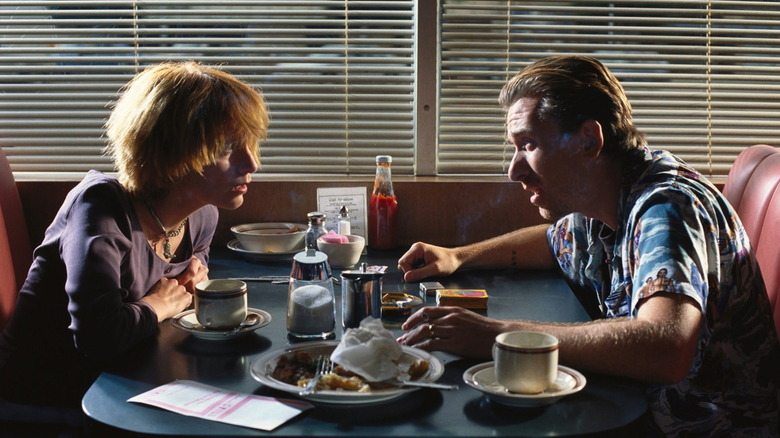
Danny DeVito has become a household name in large part for his onscreen roles in films and long-running comedy shows like "Taxi" and "It's Always Sunny in Philadelphia," but he is rarely given due credit for his work behind the scenes. DeVito is a producer on "It's Always Sunny" as well as a member of the main cast, but he has also produced a number of hugely successful projects entirely from behind the camera, including the television series "Reno 911!," "Erin Brockovich," "Garden State" and Quentin Tarantino's "Pulp Fiction."
"Pulp Fiction" is a modern classic and an enduring mainstream staple in the decades since its release. A MacGuffin in the form of a magical briefcase binds interweaving storylines. In its pursuit are a neurotic Bonnie and Clyde and two hit men tasked with looking after their boss' eccentric wife. The eclectic neo-noir is a colorful homage to American cinema, making it a much beloved film.
DeVito first got wind of Tarantino when a friend sent him the screenplay for "Reservoir Dogs," the "Twins" star told NPR's "Fresh Air." DeVito learned the film had already been shot but requested "a five-minute meeting" with the director. He told Tarantino then and there that he was interested in bankrolling his next project:
"I just listened to him for like 10 minutes, listened to his stuff. I said, 'Well, what I feel is, I don't — I can't get involved in this movie because it's already done, but whatever, whatever you're going to do next,' that's how strongly I responded to him, 'please, let me be involved.'"
What came next would develop into a cinematic staple.
DeVito Goes With His Gut
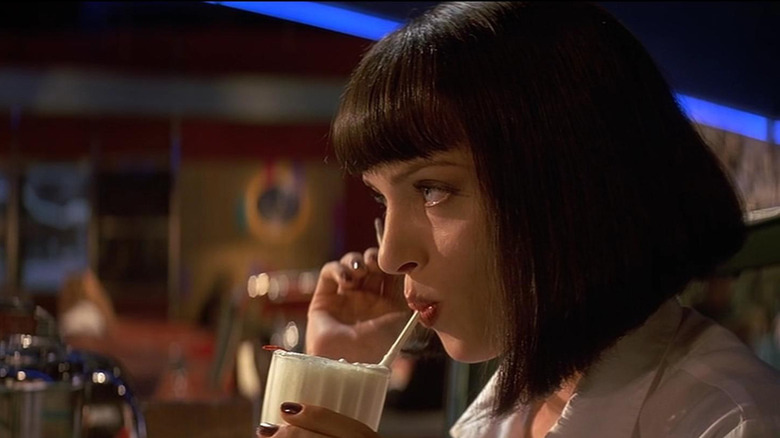
The producer tends to act on instinct when it comes to choosing his projects. DeVito "hadn't even seen Reservoir Dogs" when he agreed to fund "Pulp Fiction," he admitted to The Guardian. In fact, the crime thriller "wasn't even written" yet. He attached himself to the project because he "liked the way [Tarantino] was talking about" his new idea. DeVito just had a good feeling about Tarantino, he explained on "Fresh Air." He knew it would be "so much fun to make a movie with a guy like [Tarantino]" due to the "incredible talent" evident from his screenplay and "this enthusiasm that is brimming and wonderful."
DeVito's friends were baffled by his faith in Tarantino, but he shrugged them off. It reminded him of when his friends were similarly skeptical of "Erin Brockovich" becoming a success, he told The Guardian. People told him "nobody is going to see that movie" because of the irregular name, but DeVito retorted, "It's the woman's name, what are you going to do, change it?" Both films went on to be smash hits, proving DeVito's doubters wrong.
Some people might be surprised by the range in DeVito's catalog as a producer, which includes titles from the star-studded '90s romance "Reality Bites" to the high-budget children's movie "Matilda." When asked what guides his choices as a producer, the comedian told "CBS Sunday Morning" he "looks for good material" and "good people" to work with. This ethos has led him to produce a myriad of unforgettable films, with surely more to come.
Read this next: The 23 Best Heist Movies Of All Time
The post Danny DeVito Agreed To Bankroll Pulp Fiction Before Ever Seeing The Script appeared first on /Film.
Watch the hyperkinetic frenzy of No Wave band The Stick Men on the TV show that helped inspire Pee-wee's Playhouse

Above, the only known TV appearance of The Stick Men, a hyperkinetic, erratic, frenzied No Wave band from Philadelphia that made the scene in the early 1980s. This is their only known TV appearance, on the influential Uncle Floyd Show, a bizarre variety program that aired in New Jersey and New York from 1974 to 1998. — Read the rest
Firefox Rolls Out Total Cookie Protection By Default To All Users Worldwide
Read more of this story at Slashdot.
Gaming across generations: first-person shooters
There are genres that changed the landscape of PC gaming forever. Among them, first-person shooters deserve a special place, giving birth to the entire game culture and entertaining gamers around the world to this day.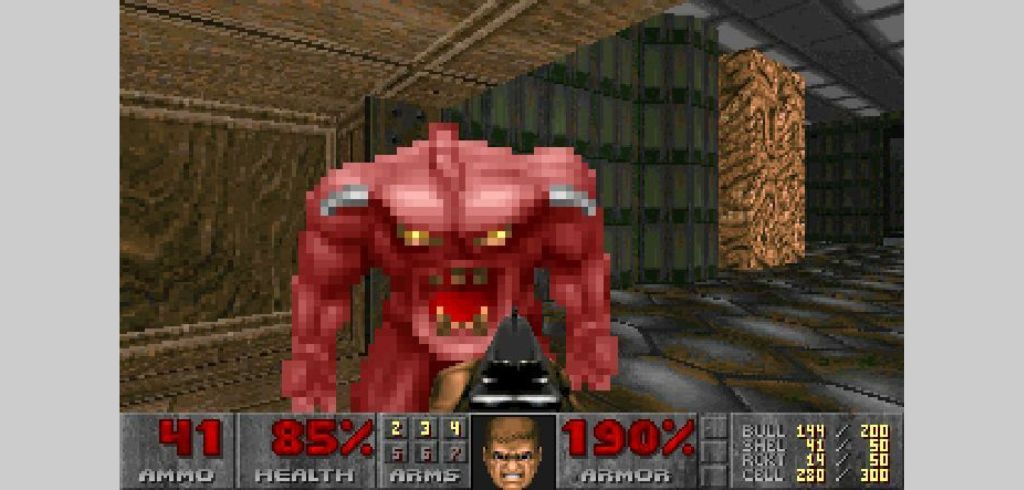
Doom – 1993
Where do we start? Saying that the FPS developed by John Romero and John Carmack is a cult game is like stating that the sun is warm. Although not the first of its kind, Doom changed the way people perceive games forever. Not only did this title give gamers a dark atmosphere filled with blood-soaked action (BFG anyone?). Doom’s deathmatch mode made multiplayer gaming a global phenomenon.
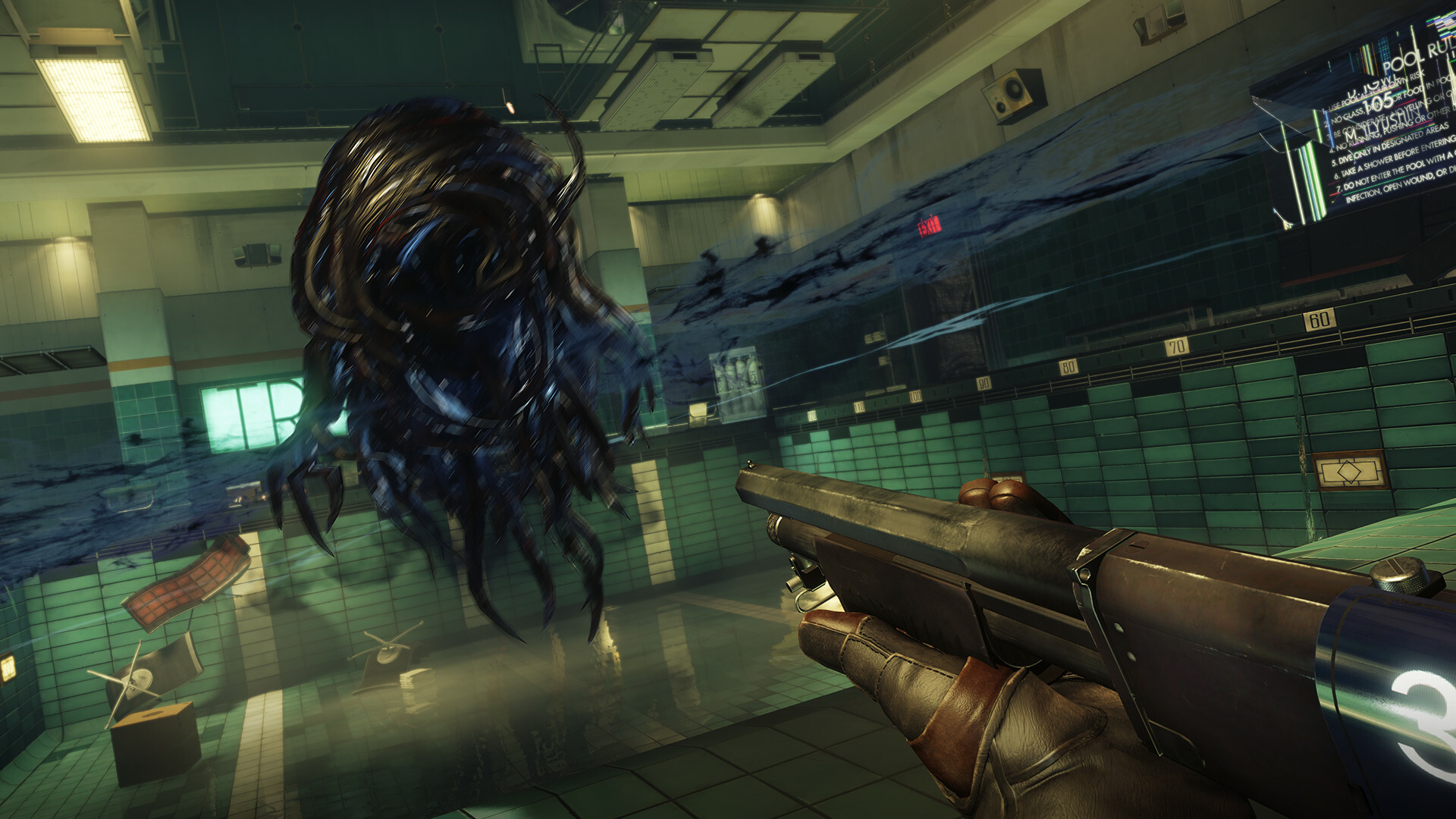
Prey – 2017
This hugely entertaining sci-fi game from Arkane Studios is a perfect example of a modern first-person shooter. Prey uses modern tools of storytelling and mixes them with dynamic action and more than just a few scares. Moreover, the game allows you to upgrade the skills of your character, giving gamers an RPG-like flavor during each playthrough.
Check out more exciting FPS games in our Action Collection during this Summer Sale on GOG!
Butterfly In The Sky Review: A Loving Tribute To The Power Of Reading Rainbow And The Magic Of LeVar Burton [Tribeca]
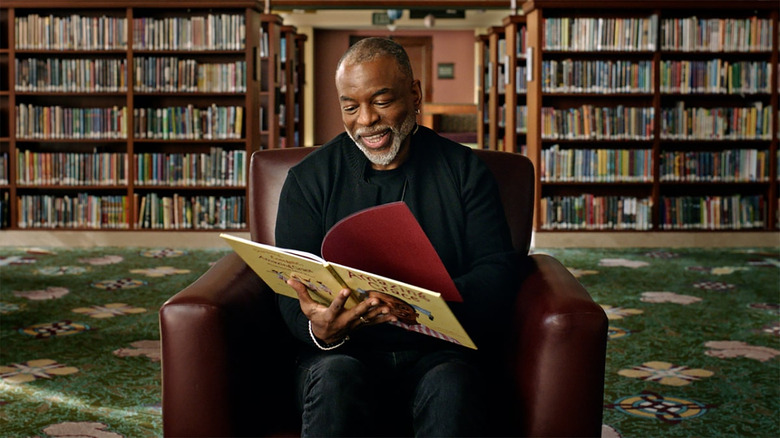
"'Reading Rainbow' was not about learning to read, it was about loving to read." This astute and apt observation is made early on in "Butterfly in the Sky," a new documentary playing at the Tribeca Film Festival that focuses on the seminal children's television series "Reading Rainbow." Similarly, this documentary from directors Bradford Thomason and Brett Whitcomb is not just about the origins and influence of "Reading Rainbow," but it serves as a touching love letter to the educational program, as well as effervescent host LeVar Burton, that sparked a love of reading and so much more in the millions of children who watched the series during its 23-year run on public television.
Friends To Know
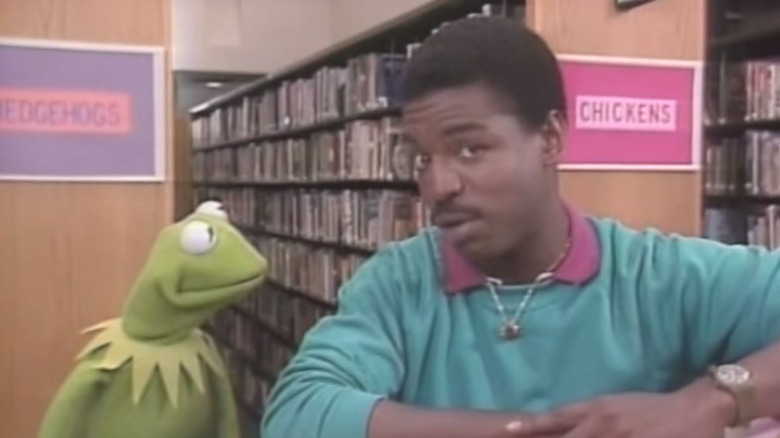
With flairs of similar, recently released documentaries such as "Won't You Be My Neighbor?" in 2018 and "Street Gang: How We Got to Sesame Street" in 2020, "Butterfly in the Sky" chronicles the creation of "Reading Rainbow" with plenty of insight from those who were on the ground floor, starting with creator Dr. Twila C. Liggett, an elementary school teacher who became frustrated with her school's increased focus on testing students rather than honing in on effective teaching methods. In her first job after leaving her school behind, Liggett was hired to create a television show about reading, and the rest is history.
"Butterfly in the Sky" highlights the chief creative forces who made "Reading Rainbow" possible, from co-creators like Larry Lancit, Cecily Truett Lancit, and Tony Buttino to the filmmakers behind the camera of the globetrotting documentary format, which you might be surprised to learn includes "Galaxy Quest" director Dean Parisot. In the interviews throughout the series, it's clear why "Reading Rainbow" became such a pillar of childhood for kids lucky enough to grow up during the show's tenure. There's pure passion in the retrospective with the show's crew, including musician Steve Horelick, who guides viewers through the step-by-step process that led him to the show's dreamy synth-fused theme song that fans have never forgotten.
Along with ample talking heads from the creators of "Reading Rainbow," one of the more delightful features is the presence of four different subjects who appeared as kid reviewers of children's books on the series. Each of them begins by being handed the book that they reviewed on the series as a child, and throughout the rest of the film, their experience on the show and how it influenced their lives becomes a cornerstone of the narrative. Each of them acknowledges the series as helping them find their way, whether it's coming to terms with their sexuality or finding a career in media. You might even recognize a couple of these faces, such as Alisa Reyes, who would go on to be part of the original cast of "All That," the kid-friendly sketch comedy series from the '90s glory days of Nickelodeon.
If there's one flaw that "Butterfly in the Sky" has, it's in a lack of more prominent voices looking back at the series. Whoopi Goldberg is the most prominent talking head, but she's unfortunately the only famous face with ties to the series who makes an appearance. Though the doc focuses on the celebrity voices who narrated featured stories on the series, such as James Earl Jones, Martin Short, Regina King, and many more, unfortunately, none of them make appearances in the film. "Butterfly in the Sky" might have benefited from having key voices in pop culture sing the show's praises, but it's a small complaint about what is otherwise a lovely doc.
Ways To Grow
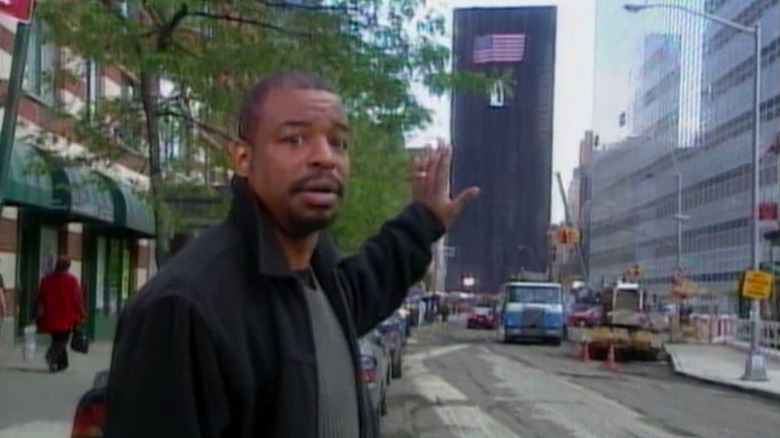
But aside from the loving look back at the series itself, host LeVar Burton is given an equally loving portrait, painted as an influential personality on par with Mr. Rogers, right down to an appearance alongside the TV legend on "Mr. Rogers' Neighborhood." That's because "Reading Rainbow" didn't just spark a love for reading among kids, it gave generations of children a sense of belonging and fuel for inspiration that would influence their future. There are endless clips from the series scattered throughout the documentary that will bring you to tears, and that's largely because of Burton's empathetic manner of speaking to the kids who were watching, and he did it without talking down to them. Kids felt like they were right alongside him on plenty of adventures, from visiting an erupting volcano to enjoying artistic Japanese cuisine. "Reading Rainbow" showed off the whole world as Burton explored it, and it made kids feel like they could fit in anywhere, just like he did.
Perhaps one of the most important parts of Burton's involvement, as illustrated in the film, is that he was allowed to be himself, right down to his ever-changing hairstyles and the gold hoop earring that dangles from his left ear, an accessory that is pinpointed as a pivotal piece of the host's appearance for Jason Reynolds, the New York Times best-selling and award-winning children's author.
The trust placed in Burton as a personality geared towards kids also allowed the series to explore sensitive issues thanks to various children's books. Whether it's the Vietnam Veterans Memorial and the complex conflict that inspired it or something closer to home such as city gangs and parents who have been incarcerated. Much like Mr. Rogers addressed the world-changing event that was 9/11, "Reading Rainbow" also reconciled the aftermath of the terrorist attack lives lost by visiting the students of a New York public school situated mere blocks from Ground Zero, with the Twin Towers once visible just down the street. It's not the only significant moment tied to American history either. Just as Fred Rogers once appeared before the Senate in defense federal funding for the Corporation for Public Broadcasting, Burton himself also appeared in front of a committee to defend the need for government money being provided to public television, armed with a passionate, resonating speech.
A Reading Rainbow
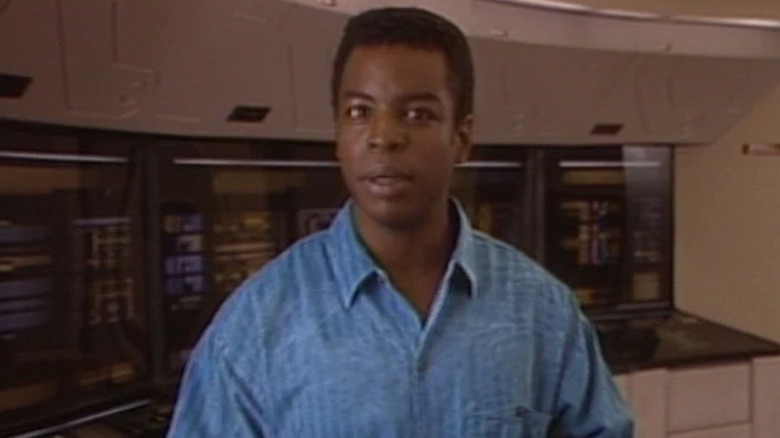
"Butterfly in the Sky" is a heartfelt, beautiful celebration of one of the most influential educational children's programs to grace our television, but it also comes with a point to make. Thankfully, it's not one that is beaten into the ground, but when it comes time to focus on the end of the series, the cause of the show's unfortunate demise is clear, and it's sadly the same problem that drove creator Dr. Twila C. Liggett away from the educational system to begin with. In an age when people can believe almost anything they read on the internet, "Butterfly in the Sky" shows it's truly a shame that "Reading Rainbow" isn't around anymore to keep a proper love for reading alive in the hearts and minds of children.
/Film Rating: 8 out of 10
Read this next: The 50 Best Documentaries You Can Watch On Netflix Right Now (June 2022)
The post Butterfly in the Sky Review: A Loving Tribute to the Power of Reading Rainbow and the Magic of LeVar Burton [Tribeca] appeared first on /Film.
Firefox rolls out Total Cookie Protection by default to all users
In February last year, Mozilla rolled out a new feature called Total Cookie Protection for its popular Firefox web browser. The feature allowed users to stop cookies from tracking them across the web by creating a separate cookie jar for every website. At launch, Mozilla restricted Total Cookie Protection to Firefox users with the Enhanced Tracking Protection mode enabled. With Firefox 89, the company extended the same protection to Private Browsing windows by default. And now, Firefox is finally rolling out Total Cookie Protection by default to all Firefox desktop users worldwide.
What is Total Cookie Protection in Firefox?
In case you missed our previous coverage, Firefox’s Total Cookie Protection feature compartmentalizes cookies for each website you visit. This prevents trackers from linking your activity across websites which, in turn, reduces the amount of information companies can gather about you.

As Mozilla explains:
“Total Cookie Protection works by creating a separate “cookie jar” for each website you visit. Instead of allowing trackers to link up your behavior on multiple sites, they just get to see behavior on individual sites. Any time a website, or third-party content embedded in a website, deposits a cookie in your browser, that cookie is confined to the cookie jar assigned to only that website. No other websites can reach into the cookie jars that don’t belong to them and find out what the other websites’ cookies know about you — giving you freedom from invasive ads and reducing the amount of information companies gather about you.”
In addition, Mozilla claims Total Cookie Protection covers a variety of other browser technologies that can be used for cross-site tracking. Furthermore, in order to ensure a smooth browsing experience, the feature can also make occasional exceptions to share cookies between websites when they are needed for cross-site logins or similar functionality.
Total Cookie Protection by default is rolling out to all Firefox users on Mac and Windows starting today.
The post Firefox rolls out Total Cookie Protection by default to all users appeared first on XDA.
Space Flight Left William Shatner Weeping and 'Grieving for the Earth' - CNET
How Lost Hikers Can Send an SOS to Space
Hypnospace spin-off Slayers X: Terminal Aftermath: Vengance is my kind of retro throwback

If you played Hypnospace Outlaw, there’s a high chance you’ll remember Zane “Zane_Rocks_14” Lofton. He’s one of the more memorable characters you meet in Tendershoot’s alternate reality web simulator, an angsty teenage boy whose home page is slathered in camouflage textures and GIFS of exploding handguns. Since release, Zane has become one of Hypnospace’s de facto mascots, a beloved dweeb that is abrasive but also kind of painfully relatable? It’s hard to laugh at Zane’s baggy trousers and love for Linkin Park-esque rap-metal when you grew up in the mid-2000’s. I mean, we all bought a dog lead from Wilkinson’s and hooked it between the belt loops on our jeans at one point, right? …right?
Ahem. Anyway. Announced earlier this year alongside Dreamsettler (a proper sequel to Hypnospace), Slayers X: Terminal Aftermath: Vengance of the Slayer is an FPS spin-off that stars the fan-favourite teen. Slayers X is framed as being an in-universe project that Zane worked on as a teen, and has been uncovered by his now 37-year-old self, who is determined to finally see it released. There’s a short demo available as part of Steam’s most recent Next Fest, and I’m delighted to say it’s exactly what I hoped it would be.
The Best Solar Tech for Camping Trips
You either love camping or outright hate it, but for those who don't enjoy camping, it's often due to the lack of home comforts. Thanks to the leaps in solar technology, it is now becoming much easier to enjoy camping with the tech we love, perhaps making it much more enjoyable.







